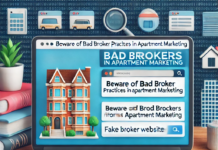Marketing moves fast. Just five years ago, the world was in the midst of a drastic transition to find WFH solutions. But a lot has changed. Not just in tools, but in the very way we connect, create, and convert. The marketing trends at the time relied on Facebook (now Meta) and the emergence of influencers to reach new potential customers. While influencers remain a current tactic, marketers now also rely on other social media platforms like TikTok and Instagram to engage with prospective customers.
The rise of AI has not only accelerated these trends but also fundamentally changed how they operate. From finding the right influencer to crafting personalized experiences, today’s marketing requires more automation, intelligence, and adaptability than ever. In addition to new emerging trends, AI is also altering traditional marketing channels. For example, AI overviews (AIO) lead to zero click impressions and changing SEO metrics.
Importantly, the impact of AI is still TBD, especially in how it will influence the customer experience.
Fortunately, as we watch the marketing landscape change and adapt to the times, the more we recognize that the essentials of marketing remain the same. Yes, marketing offers channels to reach customers and engage with them to drive sales. But now, with more noise, gimmicks, and AI promises that exist in the world, the more standard marketing techniques rise to the top. Although you can buy likes, followers and influencers, you cannot buy authenticity, honesty and great customer service.
To help, the following explores four of the most common marketing trends over the last few years. For each trend, we review why it is a current best practice and how AI is impacting it, along with providing tips on how to take advantage of each trend as it evolves.
Marketing Trend #1: Social Media & Influencer Marketing

First and foremost, what is influencer marketing?
Companies (or brands) hire an influencer to promote their product or service. Just like TV commercials that feature famous actors or sports stars to showcase their product, influencers use their fame and following to promote and drive awareness of companies (or brands). But does influencer marketing actually work?
Yes!
Why?
Trust and authenticity. Potential customers trust recommendations from an independent party. By establishing their own brand and voice, influencers build trust over time. The best influencers only promote brands that match their interests and the interests of their followers. If an influencer starts shilling all products and services, they will lose followers and their influence!
As a result of their engagement with your product or service, influencers drive traffic to your site, which boosts sales. However, effective influencer marketing starts even before a tweet or post is shared with your own marketing strategy and customer profile. Prior to collaborating with an influencer (just like analyzing potential celebrities for a TV spot), think about your own audience.
Original Insight: Companies leverage social media platforms to connect with potential customers, emphasizing authenticity and honesty.
AI Evolution: AI has revolutionized influencer marketing by enabling brands to identify and collaborate with influencers whose audiences align closely with their target demographics. Plus, certain tools utilize AI to sift through vast amounts of social media data, pinpointing influencers based on engagement metrics, audience interests, and brand compatibility. Additionally, AI-driven platforms can predict the potential ROI of influencer partnerships, allowing for more strategic collaborations.
Actionable Tip: Utilize AI-powered influencer marketing platforms to identify and engage with influencers who resonate with your brand values and target audience, ensuring more authentic and effective campaigns.
Marketing Trend #2: Authenticity Drives SEO Improvements

Fads have a limited lifespan because they play on an emotion. Trends endure because they aim to satisfy a need or desire. Therefore, another lasting marketing tactic in the SEO world remains marketing channels focused on authenticity, such as audience-driven content and reviews. As these methods provide the best bang for your SEO buck, their use and success will likely continue for years to come. As a result, content marketing and reviews provide the best bang for your SEO buck as these channels do not appear to stop anytime soon.
Why?
First, reviews demonstrate trust and credibility. In a world filled with fake news and deep fakes, customers increasingly struggle to trust things online. However, leading review platforms, such as Google and Facebook, require real identities to share reviews. As a result, authentic reviews help improve local SEO results!
Secondly, another fantastic way to demonstrate authenticity is through content. Content marketing works by engaging potential customers through building brand awareness. As we learned from the rise of the influencer, building brand awareness in an authentic fashion remains a lasting marketing trend.
An effective content marketing strategy plays the long game because it builds a relationship with potential customers. Whereas influencers typically generate awareness in short bursts, content marketing aims to build trust in order to nurture a lasting relationship. Ultimately, here’s how customer-driven content strategies correspond to business growth:
-
Boosting Sales.
Companies that optimize their content assets increase the potential for converting prospects into customers. Content educates potential customers about both products and services, along with the buying process. Ultimately, proper content marketing helps streamline the sales cycle.
-
Attracting Committed & Loyal Customers.
Companies that create content aimed at solving customer problems attract more loyal and committed customers. Consistent content with this focus builds a value-add reputation, which means potential customers view your company as a problem solver. This association generates loyalty over time.
-
Developing & Deepening Reputation.
Companies that produce valuable content not only attract loyal customers but also develop and deepen a brand’s reputation. By providing well-written and useful content, potential customers seek out your content, which builds and develops name recognition and your reputation.
-
Decreasing Marketing Costs.
Companies that develop and execute a sound content marketing strategy ultimately lower marketing costs. Interestingly, content marketing is inexpensive, safe and beneficial because evergreen content continues working for you well after the asset is produced. In particular, for companies with the resources to produce in-house content, then the main cost is time. Ultimately, content increases traffic and builds relationships with your industry and your clients.
Original Insight: Despite technological advances, authenticity and excellent customer service remain paramount.
AI Evolution: AI tools now assist in monitoring brand sentiment across various channels, enabling real-time responses to customer feedback. Predictive analytics can foresee potential customer issues, allowing proactive engagement. Moreover, AI can personalize customer experiences, fostering a sense of authenticity and care.
Actionable Tip: Leverage AI analytics to monitor customer sentiment and feedback, ensuring timely and personalized responses that reinforce your brand’s authenticity and commitment to customer satisfaction. From an SEO perspective, lean into AI, but remain flexible on performance metrics that will change. For example, showing up in AIO may be a new metric versus site visits.
Marketing Trend #3: Connections Remain Crucial to Success

Marketers must find ways to connect with potential customers. As customers adopt new forms of technology and media, then marketers must adapt. Naturally, social media marketing evolved as the rise of social media platforms like Facebook and TikTok captured our attention. Within the last few years, podcasting emerged as a defining platform as well. But, does starting a podcast (or whatever emerges next) makes sense? To make that determination, examine and determine the brand voice, strategy and unique perspective that will connect with your desired audience. For example, ask yourself some questions such as:
- What is my area of expertise?
- Do any of my competitors already podcast?
- How will my podcast differ from the competition?
- How successful are the current podcasters in related fields?
- Is it possible to add value to the leaders in my field?
In particular, producing content adjacent to a leader provides an interesting opportunity. The common topics in any field or industry are likely taken. As a result, you need to find an avenue that differentiates your topics and content from existing players. For example, creators need a unique approach to covering “marketing for X” because there are so many generalists. Plus, to really capture the attention of your audience, you need to play in the podcast or YouTube space, which means competing on non-branded platforms.
Although you can rely on your social following and existing fan base, in order to really make podcasting worthwhile, you need to create your own spin. While authenticity remains essential for any marketing channel, podcasts also need some elements of professionalism.
Original Insight: Marketers must go where the people are. Whether it’s Facebook in the 2010s or podcasting and YouTube more recently, success has always relied on meeting your audience in the channels they prefer, with content that feels authentic and consistent with your brand voice.
AI Evolution: AI now plays a critical role in how and where those connections happen. Natural language processing (NLP) tools can help define your brand voice at scale. AI tools assist in recording, editing, and even scripting podcast content, which allows novices to produce high quality content at a lower cost. Plus, with AI transcription, companies can leverage content into blog posts, email campaigns, and social clips with relative ease (after some practice).
Actionable Tip: Use AI tools to streamline content development and measure what resonates most with your audience. Even if you’re not podcasting, AI can help you refine your content plan by determining the content formats with which your audience is most likely to engage.
Marketing Trend #4: Keep an Eye on New Technology

Each and every generation offers marketers and business owners a new type of technology. In the 1990s, the Internet exploded on the scene. In the 2000s, mobile phones took charge. Now, the next iteration of computing power looks like it’s evolving again. A few years ago, most marketers didn’t care or understand the differences between artificial intelligence (AI) and virtual reality (VR) or the metaverse. Now, AI is the defining technology that is changing how to approach marketing and your business.
In the marketing world, there is less reliance on core technology versus the implementation of that tech. This means risks relate to how the tech is used. For example, SEO best practices shift over the years as Google changes its algorithm. Previously, SEO best practices included “keyword stuffing” to inform Google about the content and purpose of the page. Now, that is clearly not a best practice and frowned upon.
Original Insight: Technology changes fast, but not every new shiny object is worth chasing. Historically, those who learned how to apply new tools—not just what they were—found long-term success. This was true for the internet, mobile, and early social media. The same applies to today’s emerging AI technologies.
AI Evolution: Unlike previous waves of technology, AI is not a standalone tool—it’s a layer that now underpins nearly every marketing platform. From automated email sequences to search engine algorithms and predictive lead scoring, AI is embedded in the infrastructure of marketing operations. More importantly, marketers don’t need to master AI, but they do need to understand how it’s influencing automation, targeting, and measurement. For example, Google’s use of machine learning in SEO ranking or ad delivery means old tricks no longer work, and understanding these shifts is key to staying visible.
Actionable Tip: Start small by exploring how AI is already integrated into your existing platforms. Focus on learning how to integrate AI into your business and what decisions it’s making for you. From there, invest in experimenting with a single standalone AI tool to get hands-on experience applying new tech in your workflows.
As the world evolves and we continue to rely on technology, these AI trends will only grow in use.





